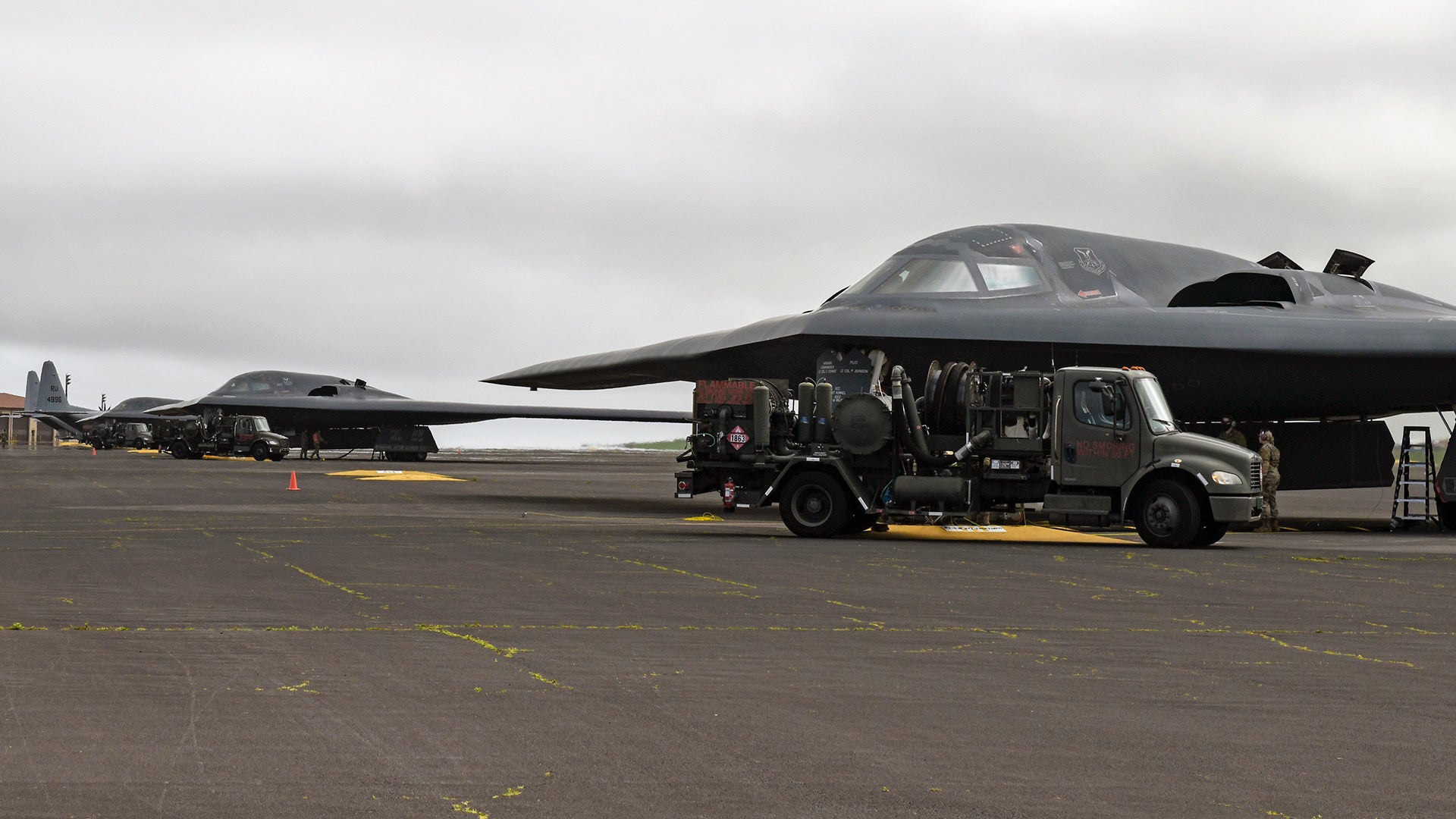Two U.S. Air Force B-2 Spirit stealth bombers joined a pair of B-1B Lancer bombers for a mission off the coast of Iceland yesterday, taking part in what the Air Force described as “long-range integration in the High North.” The Spirits had flown from their base in the United States to the Azores, a Portuguese archipelago in the North Atlantic, before joining up with the Lancers that are currently on a first-time deployment to Norway, also a NATO member, which you can read all about here.
The three B-2s from the 509th Bomb Wing at Whiteman Air Force Base, Missouri, arrived at Lajes Field in the Azores, an important mid-Atlantic staging post, on March 16. From there, after a “hot pit” refuel and crew swap, they met up with the B-1Bs from the 7th Bomb Wing at Dyess Air Force Base, Texas. These Lancers are currently operating out of Norway’s Ørland Main Air Station, but have also ventured further north in that country, visiting Bodø Main Air Station above the Arctic Circle for the first time earlier this month.
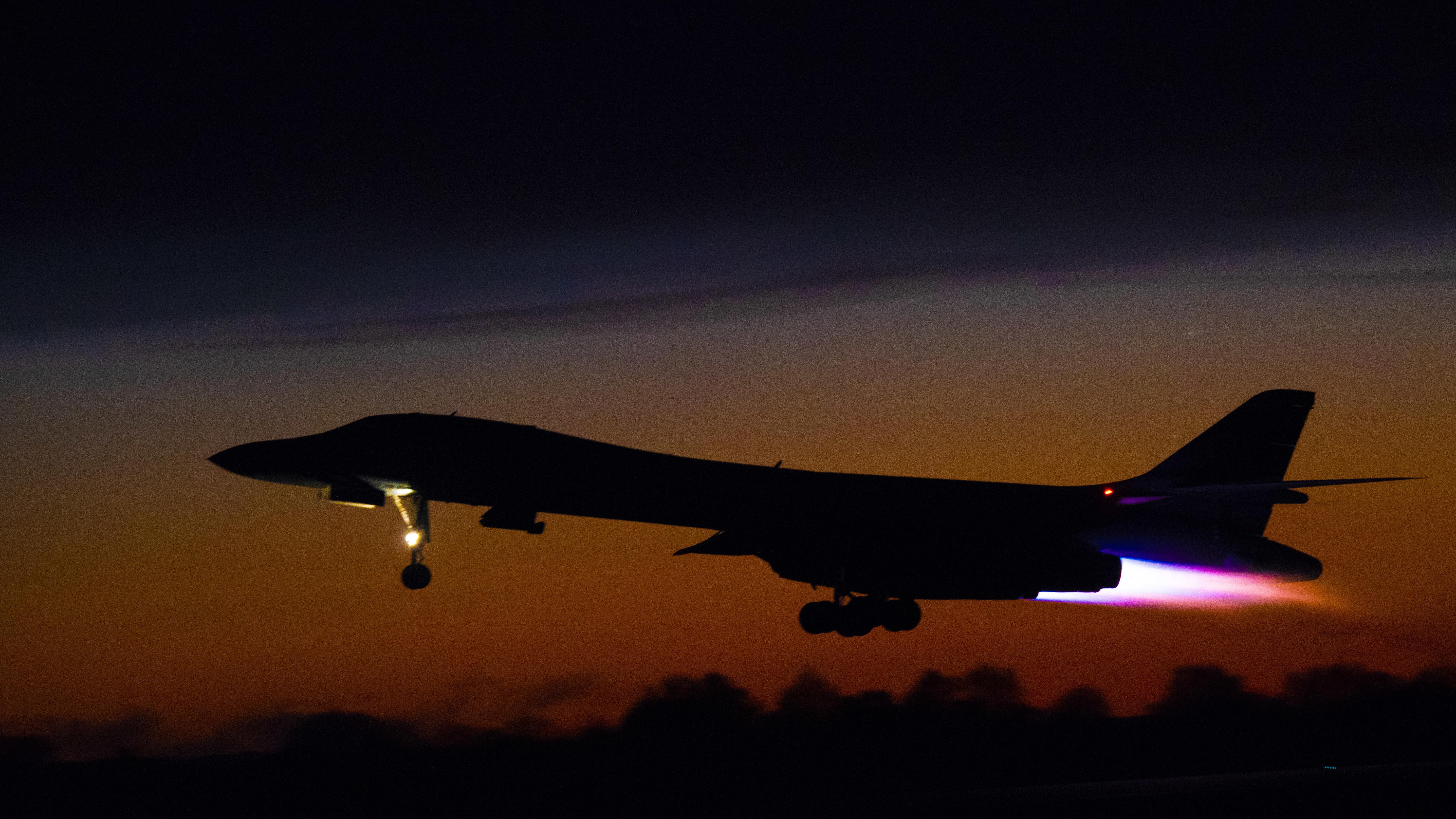
At least some of this latest Bomber Task Force (BTF) mission was flown under the cover of darkness, allowing the B-1B and B-2 crews to practice “the skills necessary to fly effective night operations in a new environment,” according to an Air Force press release.
“Bomber Task Force missions are critical to maintaining our global competitive edge,” Air Force Lieutenant General Stephen Basham, the Deputy Commander of U.S. Air Forces in Europe (USAFE), said. “The importance of providing airmen the opportunity to train in unique environments can’t be overstated.”
It also seems that the Air Force plans to make more use of Lajes Field for distributed bomber operations in the future. While this is not the first time the stealth bombers have been there, “the B-2s will rely on the strategically-located Lajes Field to perform mission-essential tasks during several upcoming BTF sorties,” the service confirmed in a press release.
The wider job of BTF missions is to make visible the United States’ commitment to the NATO alliance as well as signal to potential enemies the U.S. capability of extended deterrence — described as “a commitment to deter and, if necessary, to respond across the spectrum of potential nuclear and non-nuclear scenarios in defense of allies and partners.”
In the context of the High North, the choice of two different aircraft types on a BTF mission was likely selected as a signal to Russia, not only across the strategically vital and increasingly contested Arctic region, but also in the Baltic and along Russia’s northwest borders in Eastern Europe, including the heavily militarized enclave of Kaliningrad.
Although the four bombers remained a long way from Russian territory or key installations, their route did take them through the so-called Greenland, Iceland, United Kingdom (GIUK) gap, a critical gateway between the North Atlantic and the Norwegian Sea that has been of considerable interest to the major powers in the region since the Cold War. Russian Navy ships, submarines, and long-range patrol aircraft routinely pass through here and Russian Aerospace Forces bombers also fly similar routes when headed toward Western Europe or the Mediterranean.
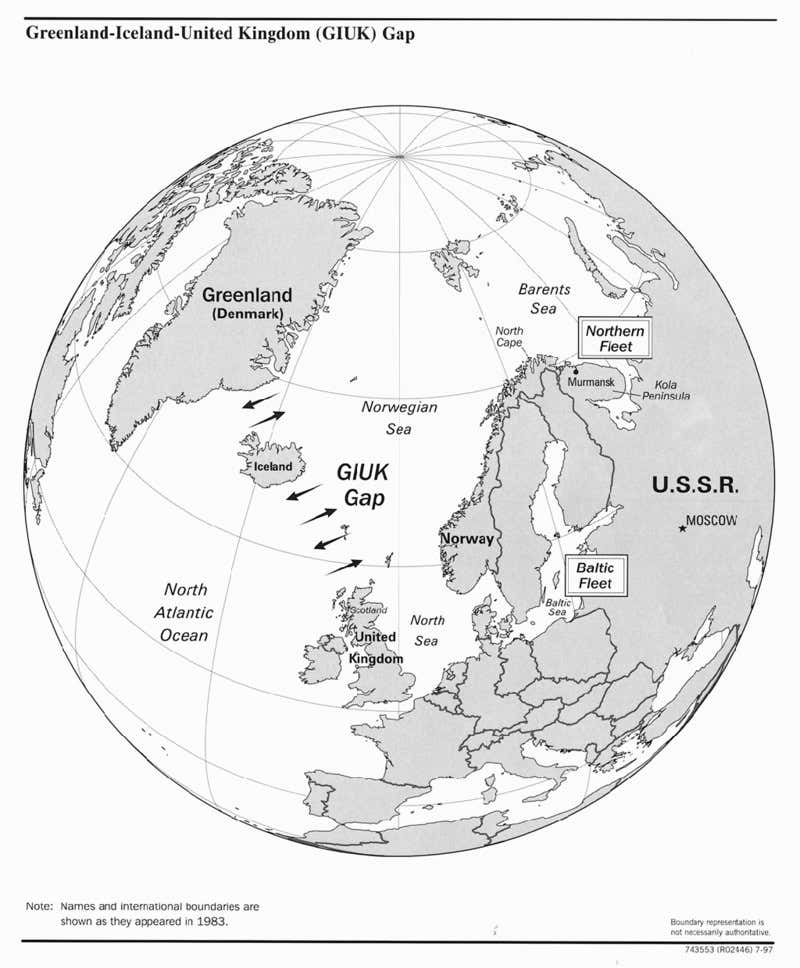
During their current deployment to Ørland, the B-1Bs have already conducted maneuvers with U.S. special operations forces Joint Terminal Air Controllers (JTAC), as well as their counterparts from Norway and Sweden. Previous integration with other types has included operating with four JAS 39 Gripen fighter jets operated by Sweden, a key partner in the region, but one that is, unlike Norway, not a NATO member. One of the Lancers also made a debut visit to Poland, landing at Powidz on March 12 for another “hot pit” refueling, and integrating with more Swedish Gripens, plus Polish and Danish F-16s.
As we have discussed before, the fact that B-1Bs are operating out of Ørland, although located around 300 miles from the Arctic Circle, is a significant development in BTF posture in itself, with detachments previously having used RAF Fairford in England, which serves as a dedicated bomber forward operating location in Europe. Having bombers in Norway brings them much closer to the Arctic region and also exploits the advantages of distributed operations, making the bombers less vulnerable and their missions less predictable.

As for the B-2, although the aircraft has deployed to Iceland in the past, back in 2019, amid efforts to increase the number of operating locations in the region for U.S. bombers, putting both types up together for a joint mission is a new development in the region.
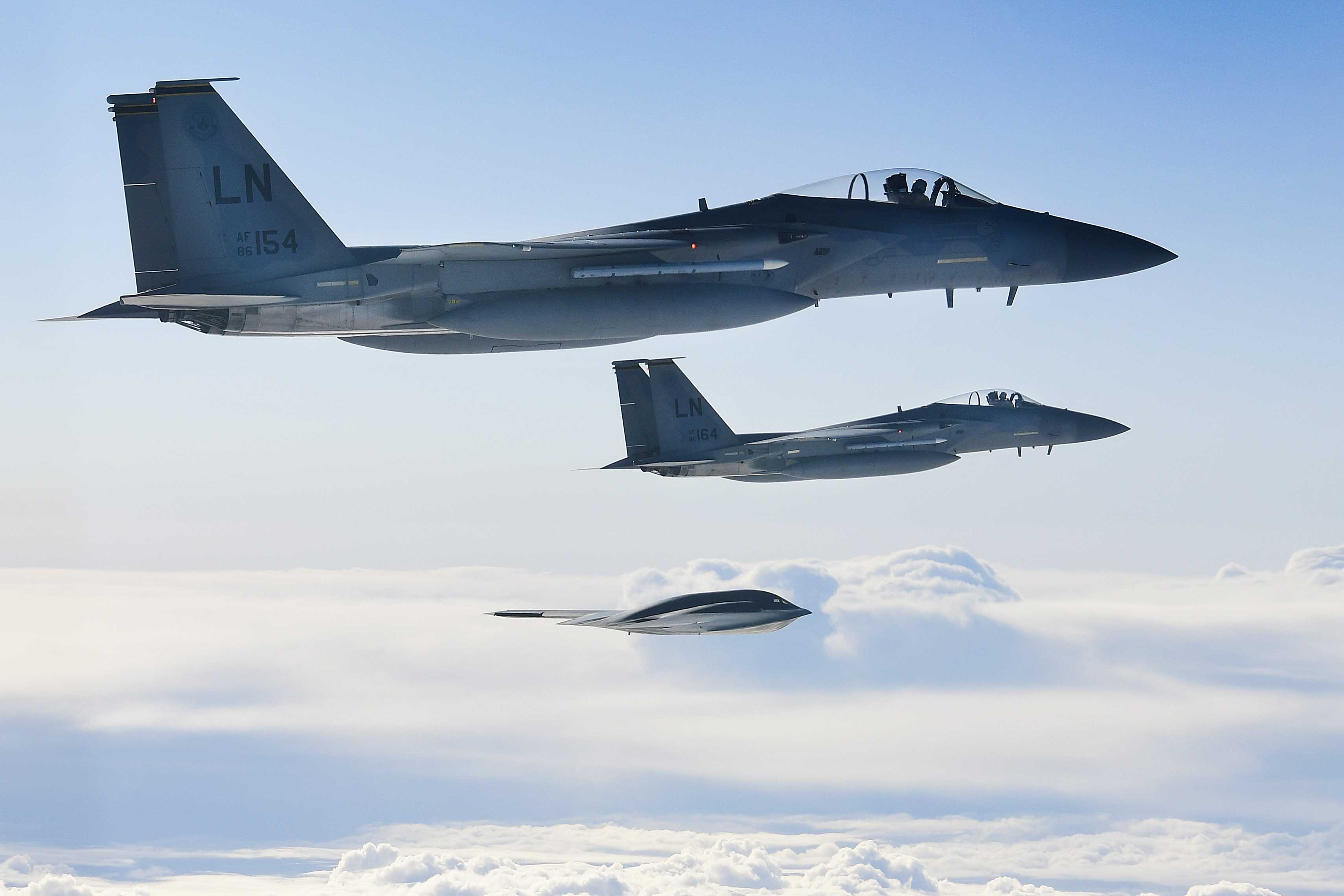
All this is happening against the backdrop of the Air Force’s Arctic Strategy that was unveiled last summer and which seeks to increase its footprint in the High North as a means to counter what’s perceived as the growing Russian threat in the region.
As climate change brings with it opportunities to exploit natural resources, as well as new maritime trade routes, the Arctic region’s importance is only growing and, with it, the potential for confrontation between the relevant powers.
Russian military activity in the region is now coordinated by the Northern Fleet Joint Strategic Command that was set up in 2014, and which covers operations in the Arctic, North Atlantic, and Scandinavia. Its most potent assets are the submarines and warships of the Northern Fleet, based on the Kola Peninsula, although Russian military aircraft, too, are now making more use of forward-located airfields in the High North.
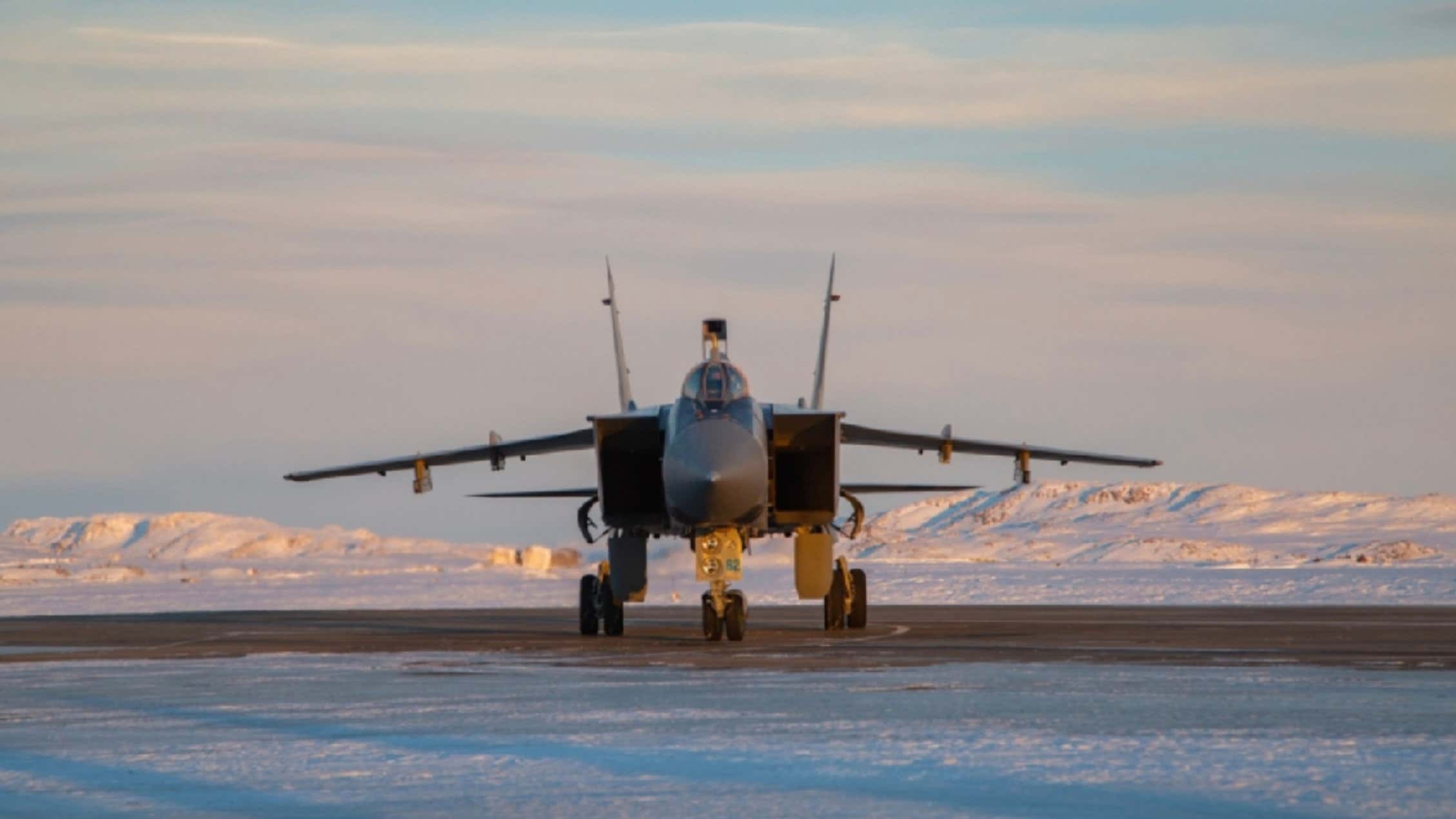
The combination of the B-1B, which offers long-range conventional strike capabilities using the AGM-158 Joint Air-to-Surface Standoff Missile, or JASSM, and the AGM-158C Long-Range Anti-Ship Missile, or LRASM, together with the stealthy and nuclear-capable B-2 sends a very powerful message. Even in a non-nuclear role, the B-2 is still a key tool for the U.S. military to conduct very-long range strikes in denied areas, and being able to operate them from a diverse array of bases only increases the possibilities of how and where they could be used. Meanwhile, although the Air Force is now beginning to retire 17 of its B-1Bs, this aircraft, too, has an important place in future plans, not least in the context of carrying new hypersonic weapons.
Having B-1Bs and B-2s operate together in the High North makes it abundantly clear that the United States is willing to bring some of its most powerful air assets to bear in the region should it have to confront Russian operations in these areas in the future.
Contact the author: thomas@thedrive.com
